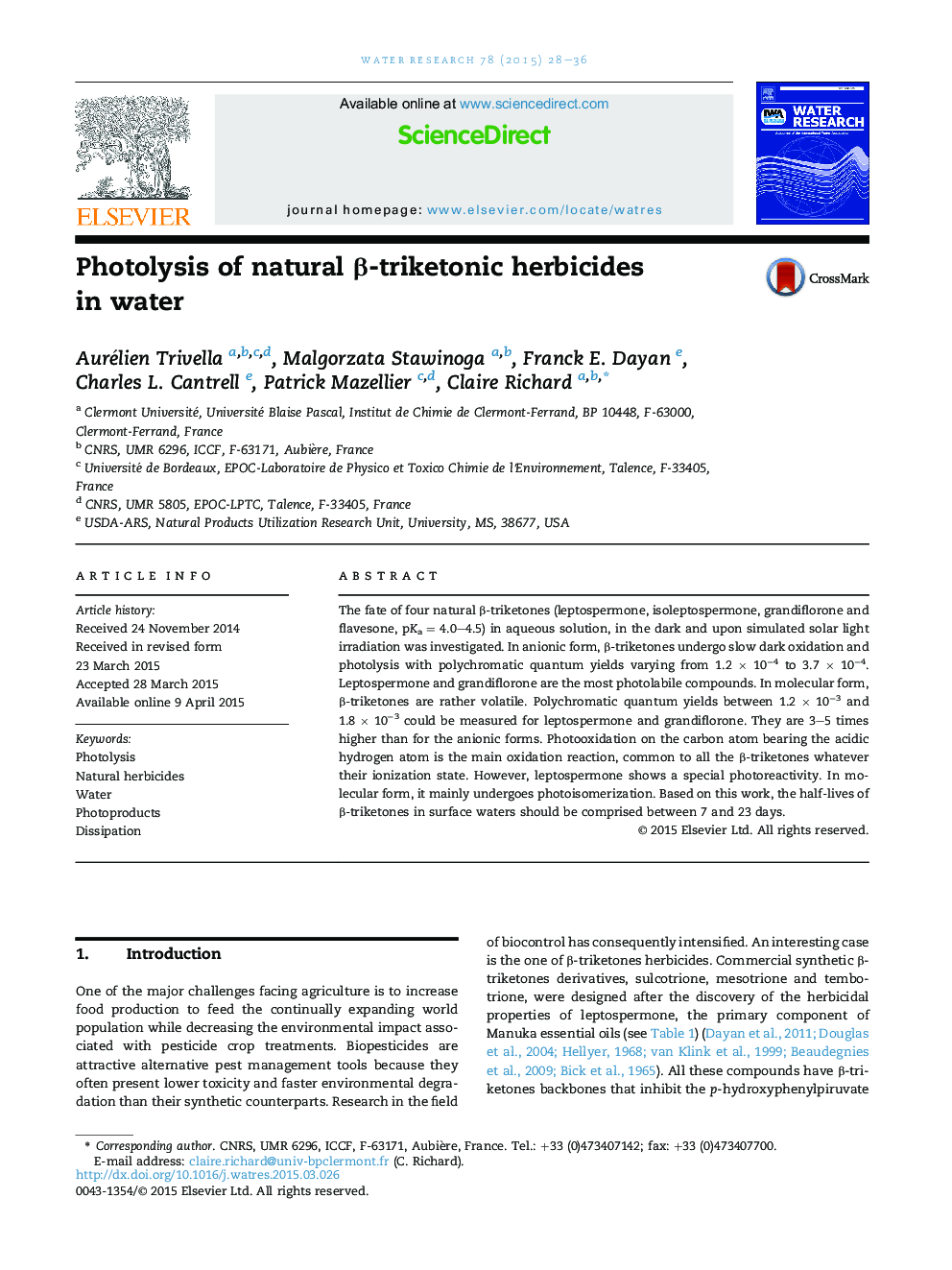| کد مقاله | کد نشریه | سال انتشار | مقاله انگلیسی | نسخه تمام متن |
|---|---|---|---|---|
| 4481113 | 1623090 | 2015 | 9 صفحه PDF | دانلود رایگان |

• The fate of four natural triketones under light exposure was investigated.
• Anionic triketones undergo photooxidation in simulated solar light.
• Oxidation takes place at the carbon bearing the acidic hydrogen atom.
• Photoisomerization occurs in the case of molecular leptospermone.
• Their photolysis half-lives outdoor would be comprised between 10 and 26 days.
The fate of four natural β-triketones (leptospermone, isoleptospermone, grandiflorone and flavesone, pKa = 4.0–4.5) in aqueous solution, in the dark and upon simulated solar light irradiation was investigated. In anionic form, β-triketones undergo slow dark oxidation and photolysis with polychromatic quantum yields varying from 1.2 × 10−4 to 3.7 × 10−4. Leptospermone and grandiflorone are the most photolabile compounds. In molecular form, β-triketones are rather volatile. Polychromatic quantum yields between 1.2 × 10−3 and 1.8 × 10−3 could be measured for leptospermone and grandiflorone. They are 3–5 times higher than for the anionic forms. Photooxidation on the carbon atom bearing the acidic hydrogen atom is the main oxidation reaction, common to all the β-triketones whatever their ionization state. However, leptospermone shows a special photoreactivity. In molecular form, it mainly undergoes photoisomerization. Based on this work, the half-lives of β-triketones in surface waters should be comprised between 7 and 23 days.
Figure optionsDownload high-quality image (118 K)Download as PowerPoint slide
Journal: Water Research - Volume 78, 1 July 2015, Pages 28–36